People often wonder what is MERV rating when they first purchase air filters. It becomes a fancy term for them, and they don’t know what to do with the ratings.
Well, can the rating levels help you get the best air filter? Let us dive deep to find out the truth.
A Quick Overview
MERV is a scale for measuring the capacity and efficacy of air filters. It shows whether a filter is suitable for a room or for an office.
You want the right filter for your use, right? The rating can give you a comprehensive idea of which filter you should go for and which you must avoid. Let me explain a bit further.
What is the MERV Rating on Filters?
The acronym MERV stands for minimum efficiency reporting value:
- It has a certain numerical scale, and you can understand how good or bad a filter is by seeing the figures.
- The ASHRAE has developed this measurement system to estimate an air filter’s capability.
- Since 1987, people have used the rating to discover their filters’ true worth.
- The MERV scale starts from 1 and ends at 20.
- The higher the MERV ratings, the lower the chances of air pollution. That doesn’t mean you should blindly go for a high-rated filter and purchase.
There are other things to consider.
What is MERV Rating and it is Important?
It is great to know the MERV of an air filter. Because it helps:
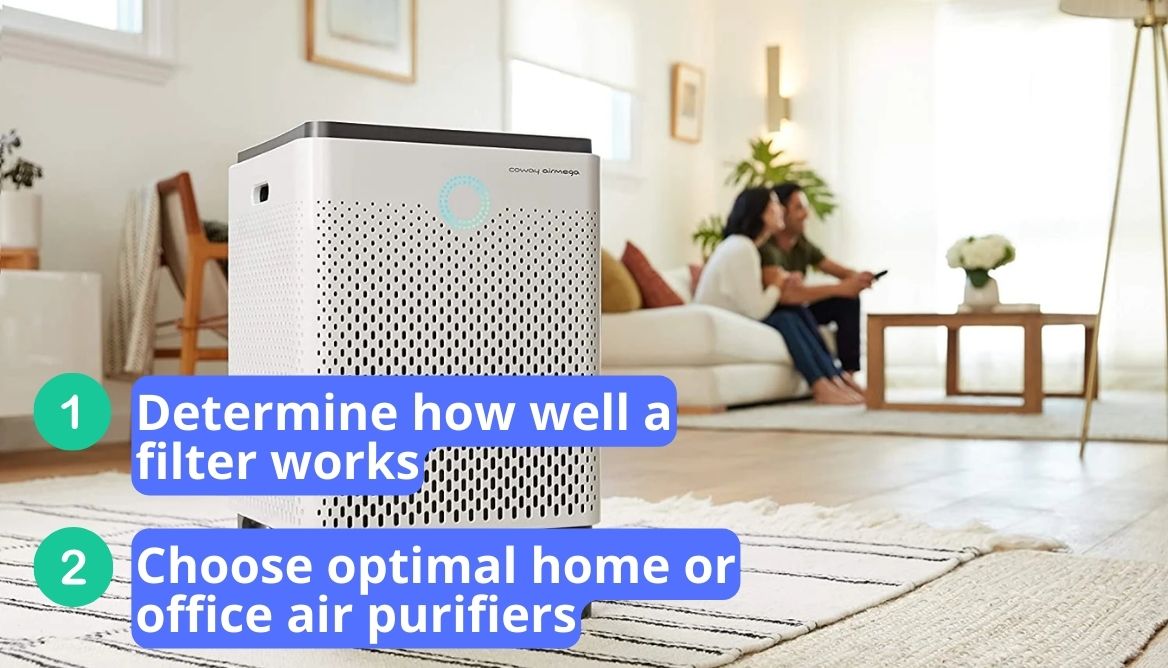
- To determine how well a filter works
- To let you choose optimal home or office air purifiers
Let me give an example.
Is Understanding MERV Rating Chart Good for Anything?
Is the MERV scale crucial to understand? To be frank, yes. When you know the rating scale better, you get a solid idea of the utility of a filter.
You can compare and contrast various available filters from the leading brands. You can choose the most suitable air filter afterward.
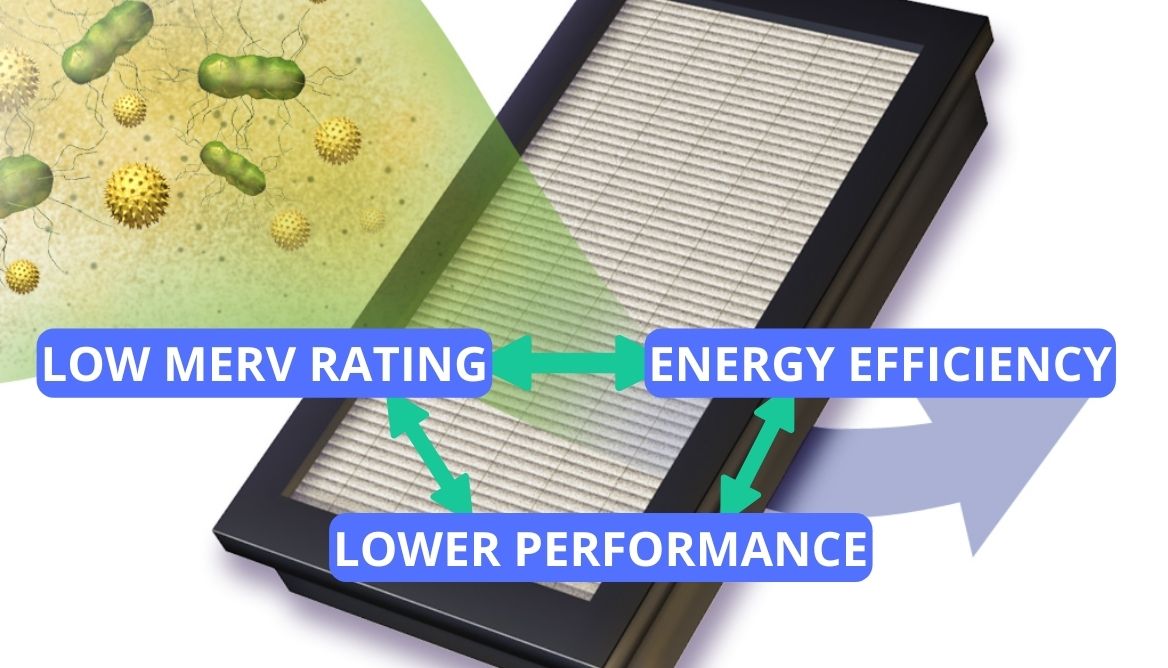
- A high MERV means an air filter can remove and filter the tiniest particles from the air. However, it will consume more energy to do so.
- Low MERV means it has energy efficiency but lower performance.
What are the Levels of MERV Rating?
There are a number of MERV levels, from 1 to 20. Each level has a certain utility and lacking. In the following section, I have discussed several MERV levels with their pros and cons.
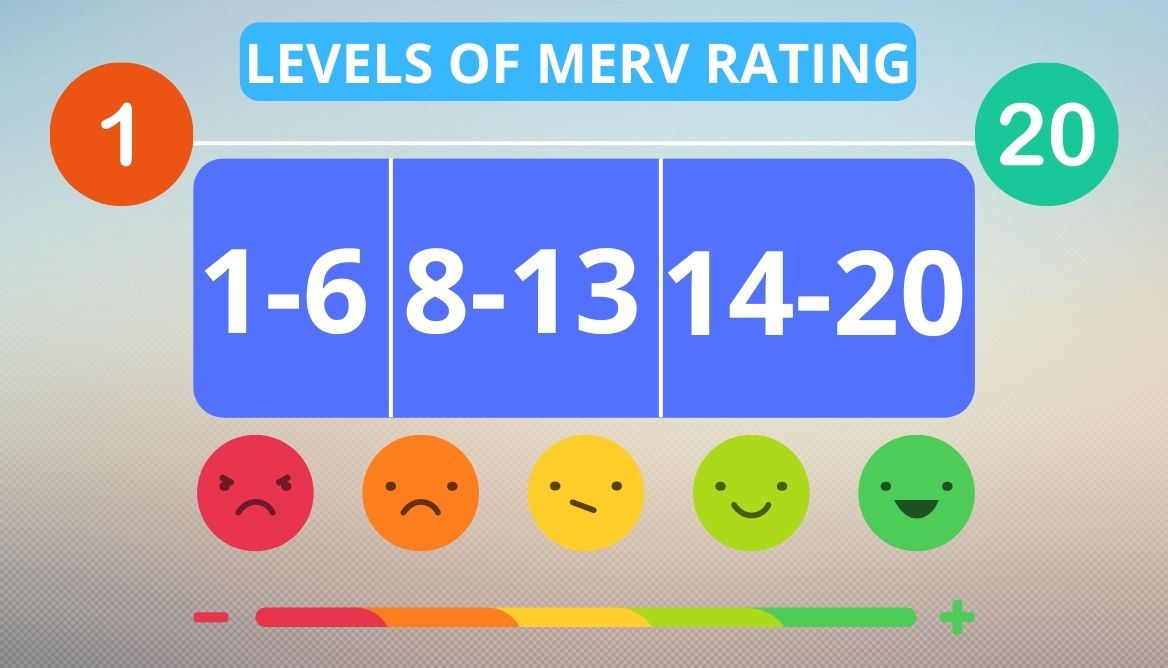
MERV Rating From 1 to 6
MERV ratings from one to six are the lowest on the scale. Filters with such ratings are not the most-desired options, yet they have certain utility. Let me explain it a bit further.
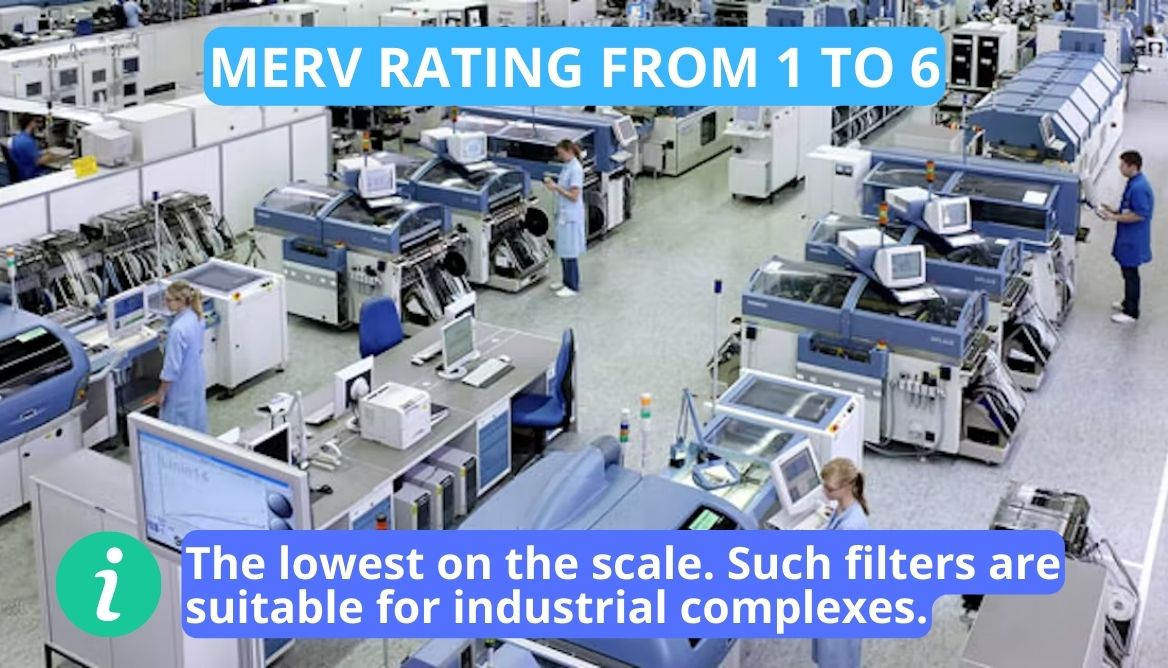
Are These Filters Effective?
The success rate of these filters is only around 20%. That means they are suitable for removing pollens, dust mites, paint dust, and whatnot. Such filters will effectively capture airborne particles up to 0.3 microns.
Let’s now see the advantages and disadvantages of such air filters.
- Better energy efficiency
- Cost-effective bargain
- No strain on the HVAC
- Cannot filter smaller particles
- Unsuitable for medical use
MERV Rating From 8 to 13
If you ask me what ratings are the best for the home and kitchen, I will definitely answer with 8 to 13. Filters having such ratings are suitable for commercial HVAC systems.

They can substantially refine indoor air quality. Many High-efficiency Particulate Air (HEPA) filters fall between these ratings.
Are These Filters Effective?
The 8-13 MERV-rated filters can capture most dust mites and airborne particles from the air. According to the place you put them, their effectiveness can vary from 20 to 85%.
- Effective in capturing microparticles
- Optimal for allergic and asthma patients
- Expensive product
- Energy consuming
MERV Rating From 14 to 20
A MERV filter of 14-20 is the best filter you can ever think of. They can improve indoor air quality to the maximum level possible. Most ULPA and many HEPA filters are manufactured with this MERV range.

Are These Filters Effective?
These air filters can remove most bacterial agents and viruses. Their effectiveness can be 90% or more. That means they can remove particles of the smallest size.
- Most suitable for virus and bacterial agents
- Fresh air circulation
- Too expensive
- Energy consuming
How Often to Change MERV Air Filter?
An air filter needs regular changes to perform perfectly:
- The highest MERV-rated filter requires a new filter after three months of use. Otherwise, the filter may fail to remove dust and debris.
- The HVAC unit can also be damaged if there are long gaps in the filter change. So it’s better to change the filter after 3-4 months of use.
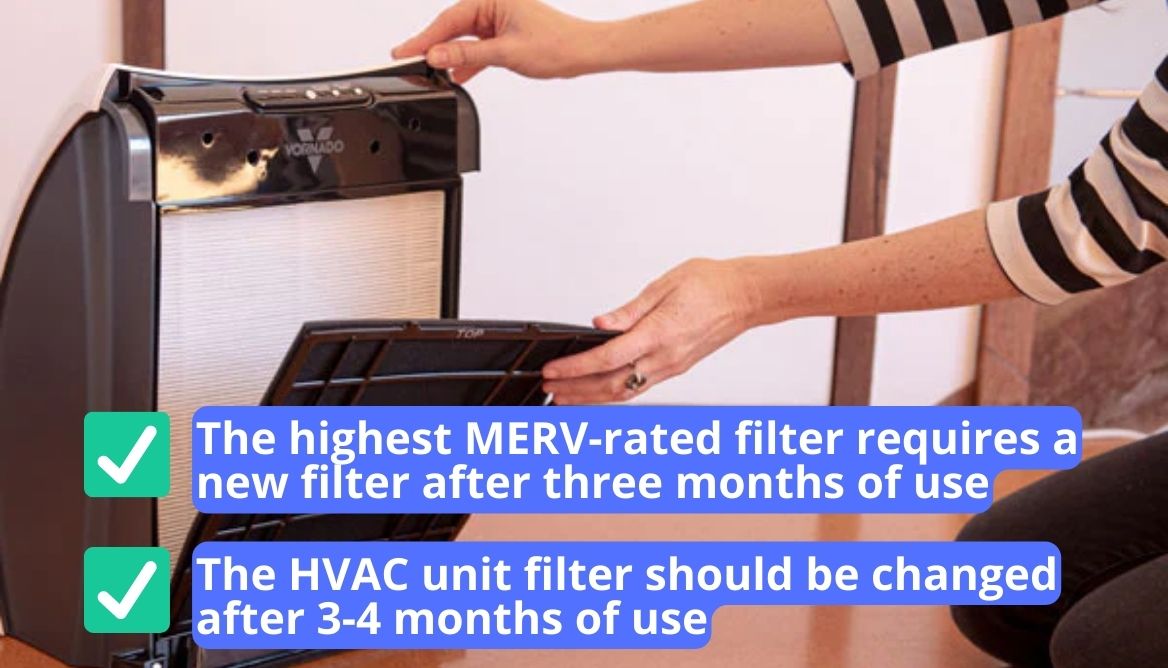
However, it may cost you some money every time.
Some Pro Tips on MERV
You should know several things about the rating system. It will help you get the optimal filter. Let me point them out one by one.
- A high MERV cannot yield the best result all the time. It can strain the HVAC system and soar up energy costs.
- Experts advise using the 8-13 rated filters for the kitchen and home.
- Air filters require regular filter changes. Neglect that, and you will face more problematic issues.
- It is better to buy filters in bulk to save some extra bucks.
MERV vs Other Rating System
MERV is an excellent way of measuring the power and potency of an air filter. The 3M company has developed an MPR system ranging from 300 to 2200.

And Home Depot also uses another scale of 1-10, named FPR, to measure an air filter’s potency. MERV is superior to the other ratings, for it is acknowledged standard by most brands.
FAQ
What is a good MERV rating?
Experts consider MERV between 8-13 to be good and efficient.
Is a higher MERV rating better?
A high MERV rating means the filter can capture more particles, mold spores, insecticide dust, and other contaminants. So, buying air filters with a high MERV is better.
Is MERV 11 or 13 better?
MERV 13 furnace filters are better because their efficiency is 98%, while MERV 11 efficiency is around 90%.
Is Merv 13 too high for home?
13 is the best recommended MERV rating for a home. Air filters can diminish the HVAC system if you choose higher than that.
Conclusion
You see, why is the MERV rating so necessary? It imparts you the knowledge to get the best filter for your home and beyond. For medical purposes, choose filters of more than 13 MERV. And for domestic use, get ones with 8-13 ratings.
Do you think this rating can help you choose a better filter? Can you rely on this scale? Let me know what you think below. Adios, buddy!

Danny is a passionate writer who loves to share his knowledge about air purifiers. He’s been writing for 10 years, and he’ll share all that experience with Very Well Home viewers to help you make the best decision when it’s time to buy an appliance!



![Are Ionizers Safe and Should You Use Them In [y]? are ionizers safe](https://verywellhome.com/wp-content/uploads/2023/12/are-ionizers-safe-150x150.jpg)


